When it comes to indoor gardening, vining and climbing plants hold a special special place in our hearts. After all, who doesn’t love a plant that actively explores its environment, creating a tapestry of green as they go.
But with so many varieties to choose from, how do you decide which ones are right for you? Well, we’ve curated a list of 28 vining and climbing plants, each with its unique set of care requirements, aesthetic features, and growth habits.
Table of Contents
1. Pothos (Epipremnum aureum)

Pothos, often referred to as Devil’s Ivy, is a go-to choice for indoor plant lovers, especially those who are new to the hobby. With vibrant, heart-shaped leaves, this vine can survive in a variety of indoor conditions, making it a great option for nearly any room. Its trailing vines can be styled to climb or hang, offering plenty of decorating possibilities.
And let’s not forget about the numerous Photos varieties out there.
- Ease of Care: Low; tolerates low light and irregular watering
- Best For: Beginners, offices, and spaces with limited natural light
- Fun Fact: Despite its nickname, “Devil’s Ivy,” Pothos is actually known for its air-purifying qualities.
2. Philodendron
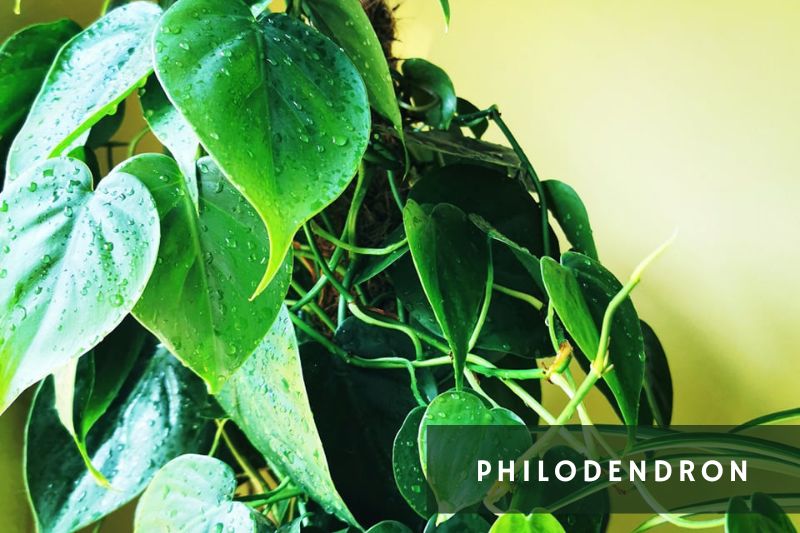
Philodendron plants are known for their lush foliage and are one of the easiest houseplants to maintain. They offer a range of leaf shapes and sizes, making them a versatile decor option.
- Ease of Care: Low; adaptable to different light conditions
- Best For: Aesthetic appeal, indoor gardens, and both beginner and experienced plant owners
- Fun Fact: The name “Philodendron” comes from the Greek words ‘philo’ meaning love and ‘dendron’ meaning tree.
3. Monstera adansonii (Swiss Cheese Vine)
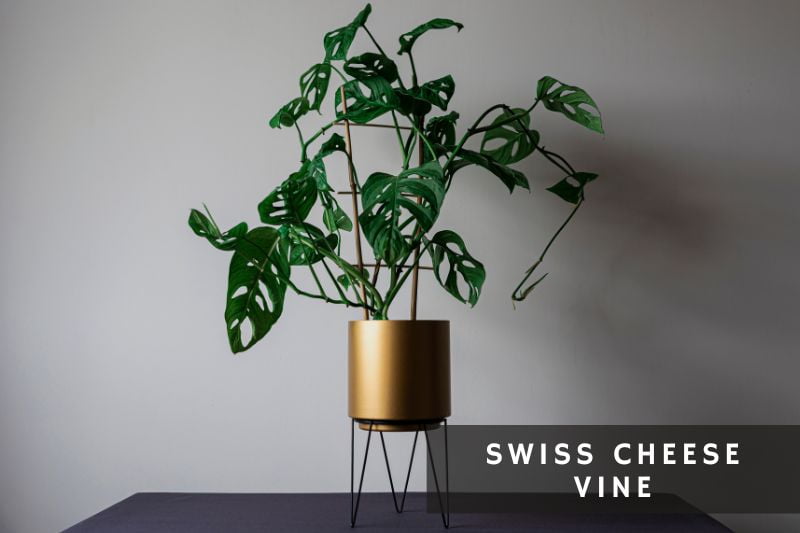
With its characteristic holey leaves, this tropical plant is a striking addition to any space. It grows rapidly and thrives with proper support, making it a fantastic choice for a statement piece.
- Ease of Care: Moderate; prefers indirect light and high humidity
- Best For: Statement pieces, bathrooms, and tropical-themed spaces
- Fun Fact: The holes in the leaves are thought to help the plant withstand strong winds in its natural habitat.
4. String of Hearts (Ceropegia woodii)
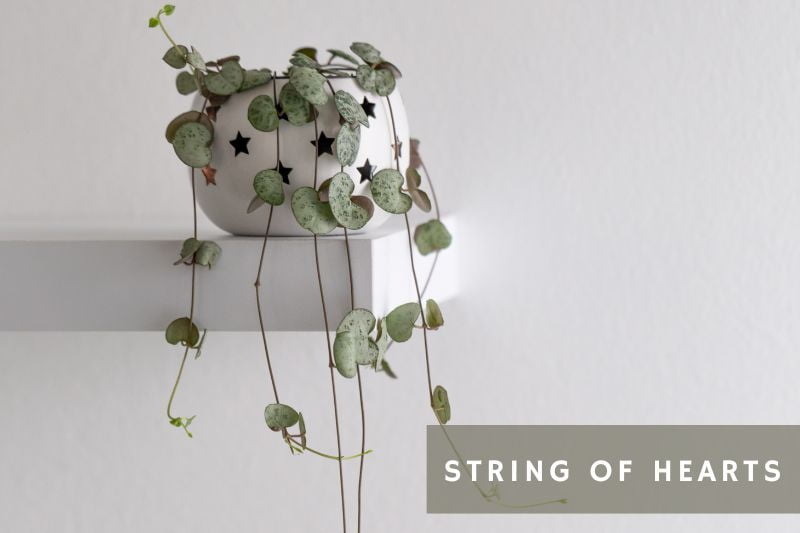
String of Hearts, also known as Rosary Vine, is a captivating succulent with heart-shaped leaves that dangle from slender trailing vines. Its low-water needs and ability to thrive in indirect light make it a lovely choice for indoor hanging baskets.
And if you want to learn more about it, make sure to check out our String of Hearts care guide.
- Ease of Care: Low; drought-tolerant and prefers indirect light
- Best For: Hanging baskets and small spaces
- Fun Fact: The plant can produce small, magenta-colored flowers that resemble lanterns.
5. Hoya (Wax Plant)
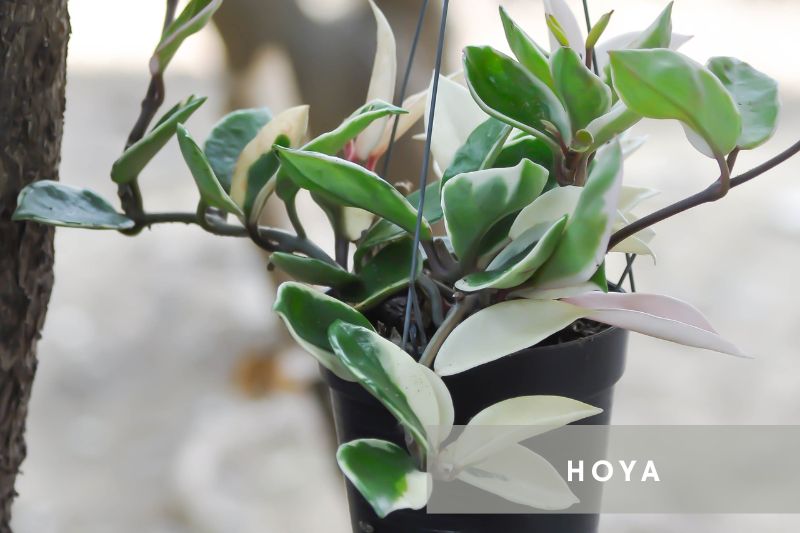
Known for their waxy, star-shaped flowers, Hoyas are both climbers and trailers. They are low-maintenance and drought-tolerant, making them a popular choice for indoor gardeners.
Among the various Hoya varieties, our favorite is the Hoya Carnosa ‘Tricolor’, which comes with variegated leaves featuring a blend of green, creamy white, and pink hues.
- Ease of Care: Moderate; prefers bright, indirect light
- Best For: Windowsills and experienced plant owners
- Fun Fact: Some Hoya varieties can produce flowers with a pleasant fragrance.
6. English Ivy (Hedera helix)
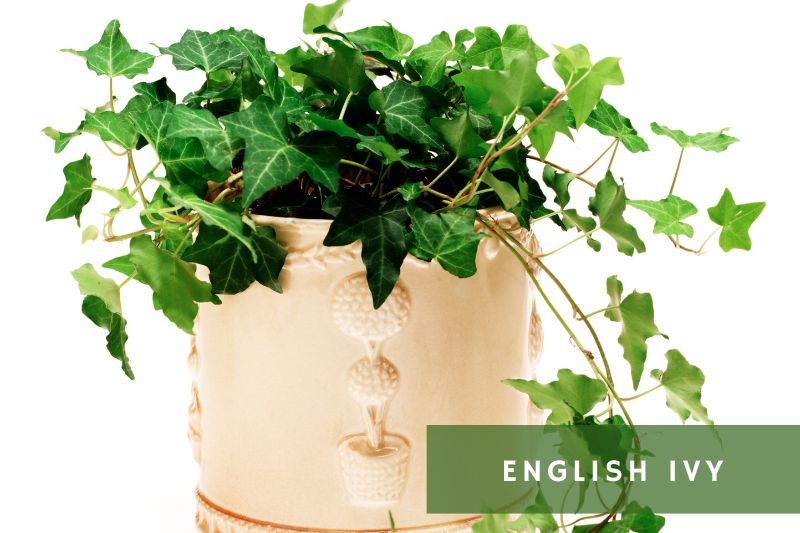
English Ivy is a classic climber known for its evergreen foliage and rapid growth. It can adapt to various conditions but thrives best in cooler temperatures and high humidity, making it a great choice for rooms with less heat.
- Ease of Care: Moderate; prefers cooler temperatures
- Best For: Climbing on trellises or covering walls
- Fun Fact: It’s often used in outdoor landscaping but can be invasive if not managed.
7. Arrowhead Plant (Syngonium)
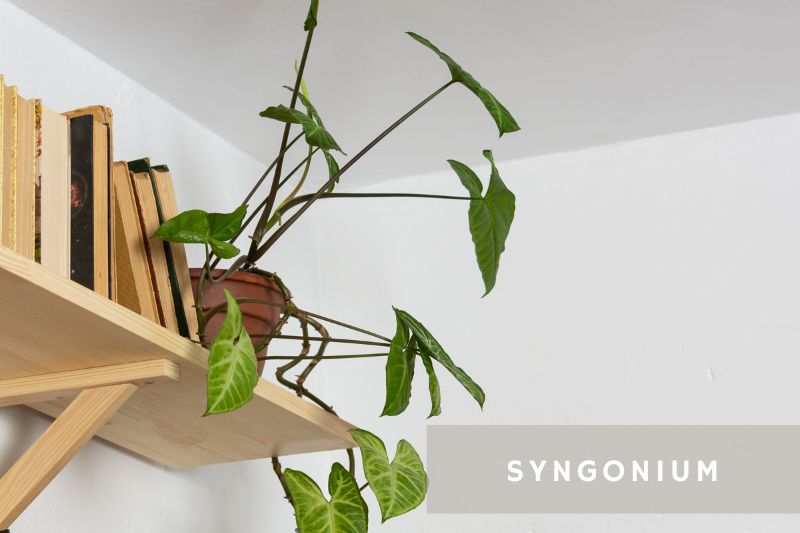
The Arrowhead Plant offers a range of leaf colors and shapes, adding a unique touch to your indoor garden. As the plant matures, its leaves shift from arrowhead shapes to a more lobed form, providing visual interest as it grows.
- Ease of Care: Moderate; prefers humid conditions and indirect light
- Best For: Desktops and mixed planters
- Fun Fact: The plant is known to remove harmful chemicals from the air, according to NASA’s Clean Air Study.
8. Passionflower (Passiflora)
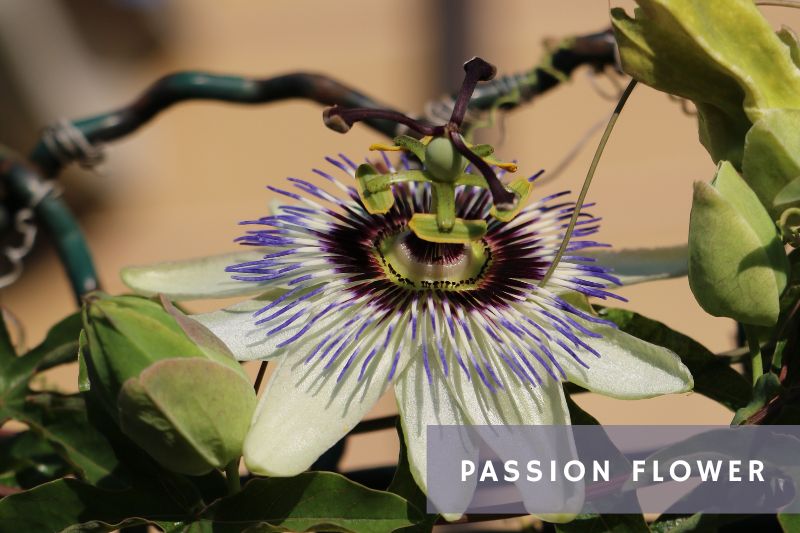
Passionflower is a dramatic climber with lovely flowers. While it requires a bit more attention than other indoor vines, its appearance makes the extra care worthwhile. It’s perfect for an indoor trellis or a sunny windowsill.
- Ease of Care: High; requires ample sunlight and regular feeding
- Best For: Experienced gardeners and sunny locations
- Fun Fact: The plant’s flowers are often used to make herbal remedies for anxiety and sleep disorders.
9. Lipstick Plant (Aeschynanthus)
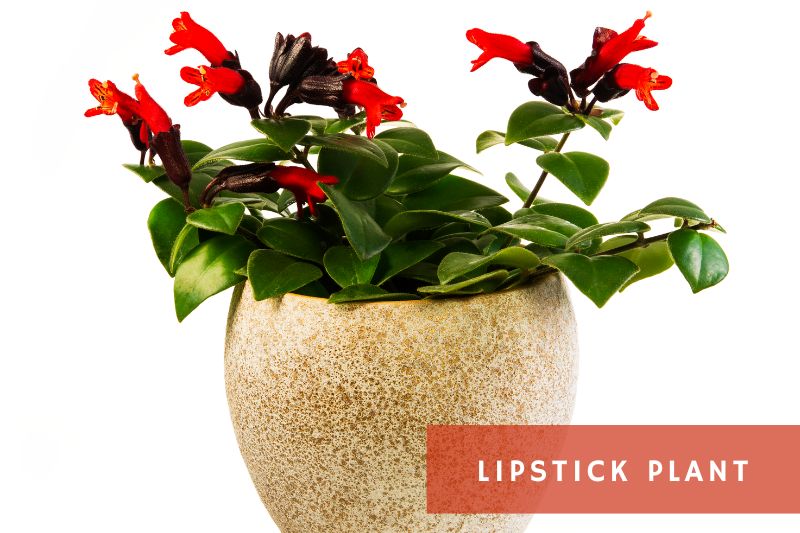
Named for its tube-like, red flowers that resemble lipstick tubes, this tropical plant thrives in humid, well-lit conditions.
- Ease of Care: Moderate; requires high humidity and bright, indirect light
- Best For: Hanging baskets and windowsills
- Fun Fact: The flowers emerge from a specialized structure called a calyx, which looks like a lipstick tube.
10. Spider Plant (Chlorophytum comosum)
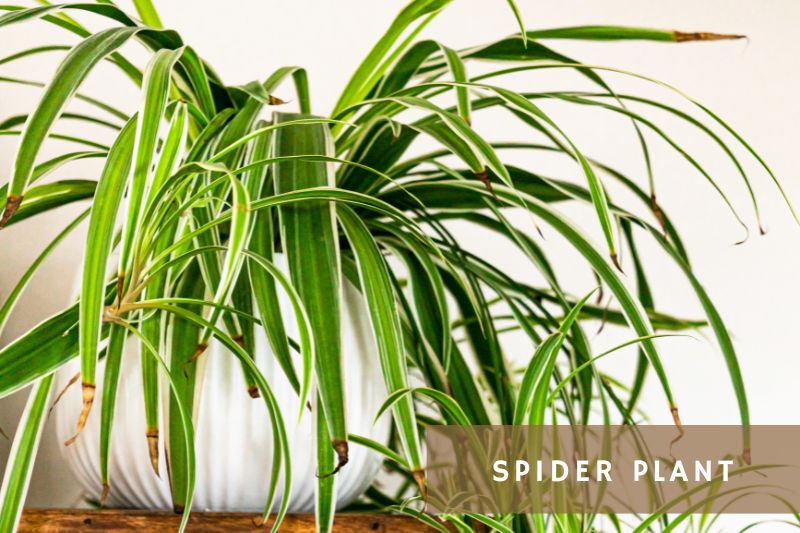
An easy-to-grow, low-maintenance favorite, the Spider Plant boasts long, arching leaves and produces baby plants that dangle like delicate, green spiders.
- Ease of Care: Low; tolerates a wide range of conditions
- Best For: Beginners and those looking for air-purifying plants
- Fun Fact: Spider Plants are known to be safe for pets, making them a popular choice for pet owners.
11. Grape Ivy (Cissus rhombifolia)
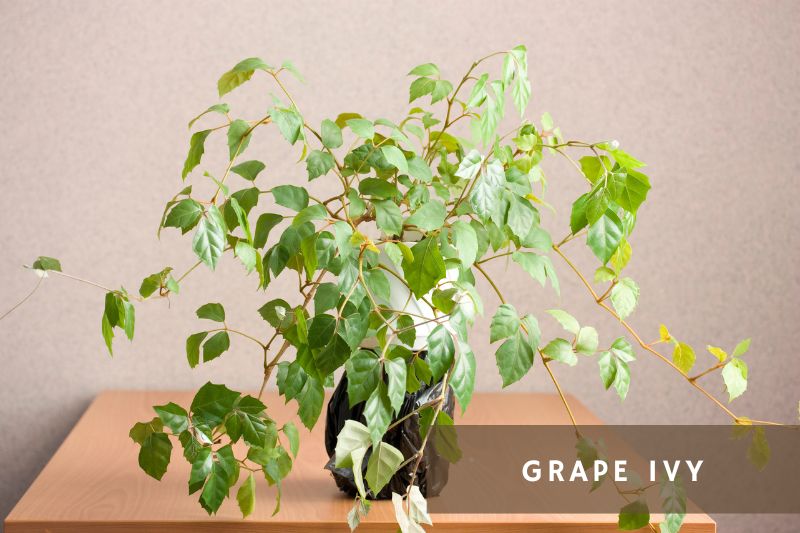
Grape Ivy resembles miniature grapevines with its glossy, deep green leaves. This climbing plant prefers indirect light and moderate humidity, making it a great choice for most homes.
- Ease of Care: Moderate; prefers indirect light and moderate humidity
- Best For: Trellises and tabletop displays
- Fun Fact: Despite its name, Grape Ivy doesn’t produce grapes but does belong to the grape family.
12. Wandering Dude (Tradescantia)

This trailing beauty comes in various colors and patterns, with foliage that ranges from deep purple to silvery-green, adding a pop of color to any space.
- Ease of Care: Low; tolerant of various light conditions
- Best For: Hanging baskets and ground cover
- Fun Fact: This plant can easily propagate from cuttings, making it simple to share with friends.
13. Asparagus fern (Asparagus setaceus)
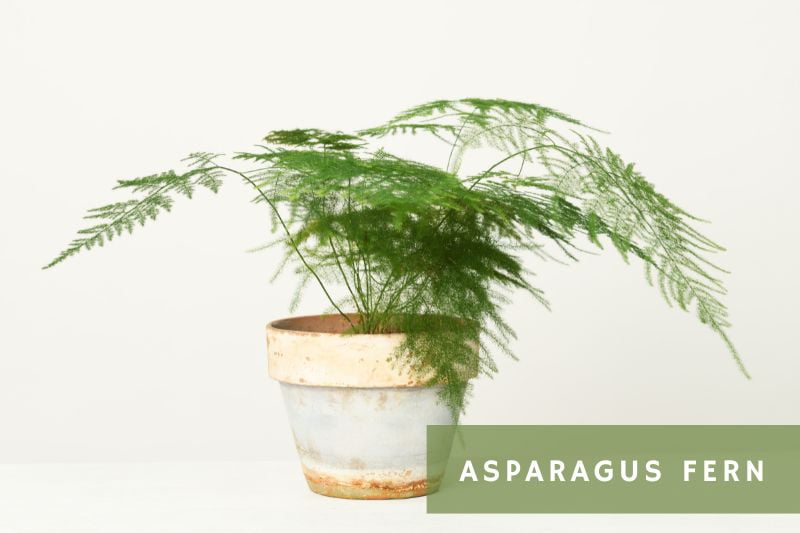
Despite its name, this feathery plant is not a true fern. It prefers indirect light and regular watering, making it a bit more demanding than other indoor vines.
- Ease of Care: Moderate; prefers indirect light and regular watering
- Best For: Adding texture to indoor gardens
- Fun Fact: Despite its name, it’s actually a member of the lily family.
14. Satin Pothos (Scindapsus)
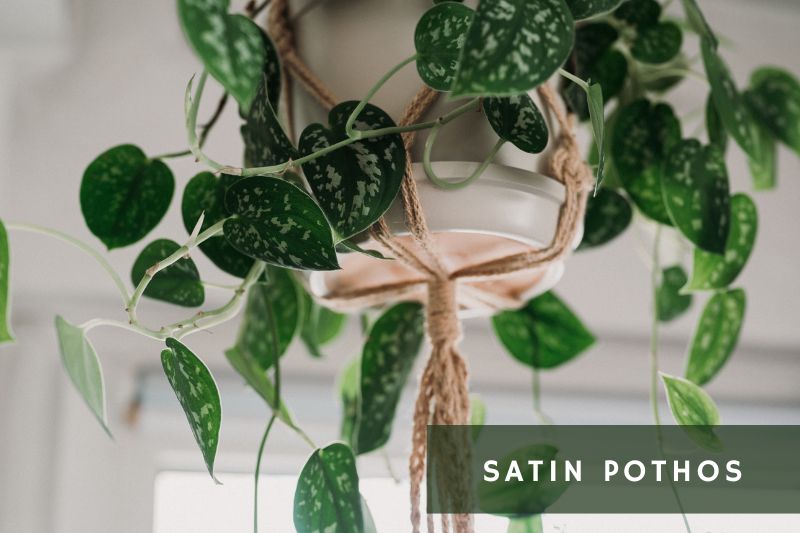
Satin Pothos comes with velvety, heart-shaped leaves with silver patterning, giving it a luxurious appearance. This trailing plant is a close relative of the more common Pothos and shares its ease of care, making it a low-maintanance indoor plant perfect for beginner gardeners.
- Ease of Care: Low; tolerant of low light and occasional neglect
- Best For: Adding a touch of luxury to any room
- Fun Fact: Despite the name, Satin Pothos is not a true Pothos but rather a Scindapsus species.
15. Creeping Fig (Ficus pumila)

This fast-growing, self-adhering climber adds a touch of greenery to walls or other vertical surfaces. Its small, heart-shaped leaves create a lush, textured backdrop.
- Ease of Care: Moderate; requires bright, indirect light
- Best For: Wall coverage and large indoor spaces
- Fun Fact: This plant can be trained to grow into various shapes and patterns on walls.
16. Orchid Cactus (Epiphyllum)

You’ll just love this captivating climber with its showy, fragrant flowers atop arching, succulent stems! Orchid Cactus brings a delightful, tropical touch to any indoor space. And guess what? There are a lot more flowering succulents out there just waiting to brighten up your home!
- Ease of Care: High; requires specific light and watering conditions for blooming
- Best For: Experienced gardeners and floral displays
- Fun Fact: Despite the name, it’s not an orchid but gets its name from the orchid-like flowers.
17. Madagascar Jasmine (Stephanotis floribunda)
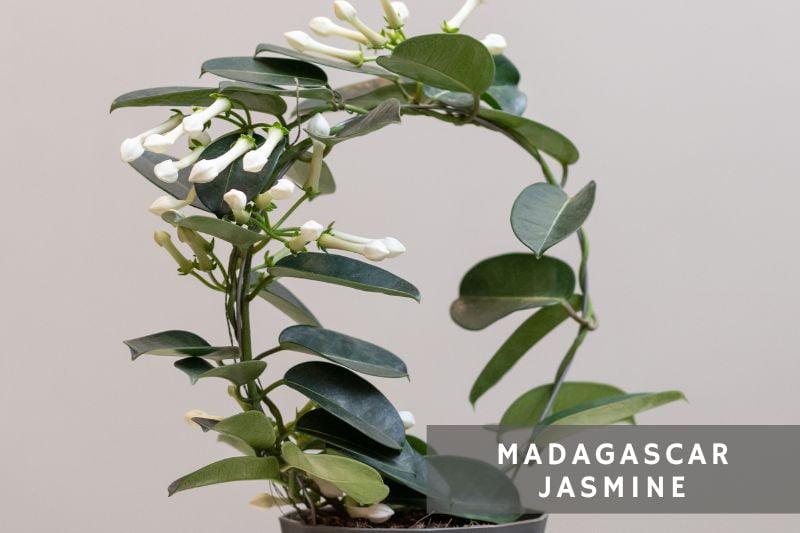
Known for its sweetly scented, waxy flowers, Madagascar Jasmine is a charming climber that brings an air of romance and elegance to any room.
- Ease of Care: High; needs a lot of light and humidity
- Best For: Fragrant indoor gardens
- Fun Fact: The flowers are often used in wedding bouquets due to their long-lasting fragrance.
18. Mistletoe Cactus (Rhipsalis)
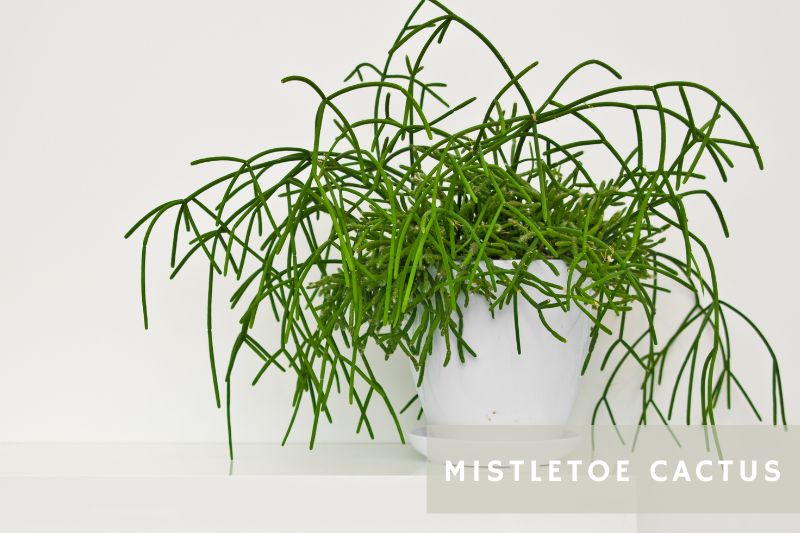
Mistletoe Cactus is a unique, non-spiky cactus that features dangling, hair-like stems. It prefers indirect light and high humidity, making it a great choice for hanging baskets in well-lit bathrooms.
- Ease of Care: Moderate; prefers high humidity and indirect light
- Best For: Hanging baskets and bathrooms
- Fun Fact: Unlike most cacti, Mistletoe Cactus is native to rainforests rather than deserts.
19. String of Pearls (Senecio rowleyanus)
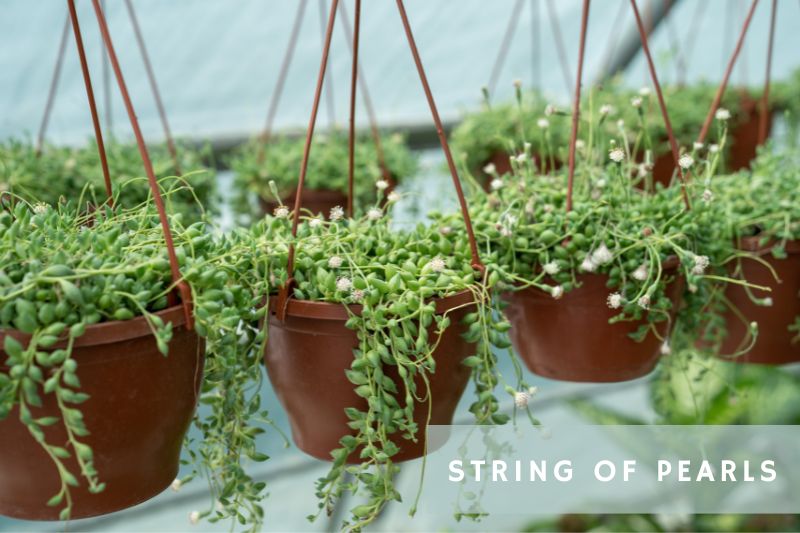
With its round, pearl-like leaves strung along thin, trailing vines, the String of Pearls creates a whimsical atmosphere. Its succulent nature makes it drought-tolerant and low-maintenance.
- Ease of Care: Low; drought-tolerant and prefers indirect light
- Best For: Hanging baskets and elevated displays
- Fun Fact: The plant’s unique bead-like leaves are an adaptation to store water.
20. Vanilla Orchid (Vanilla planifolia)
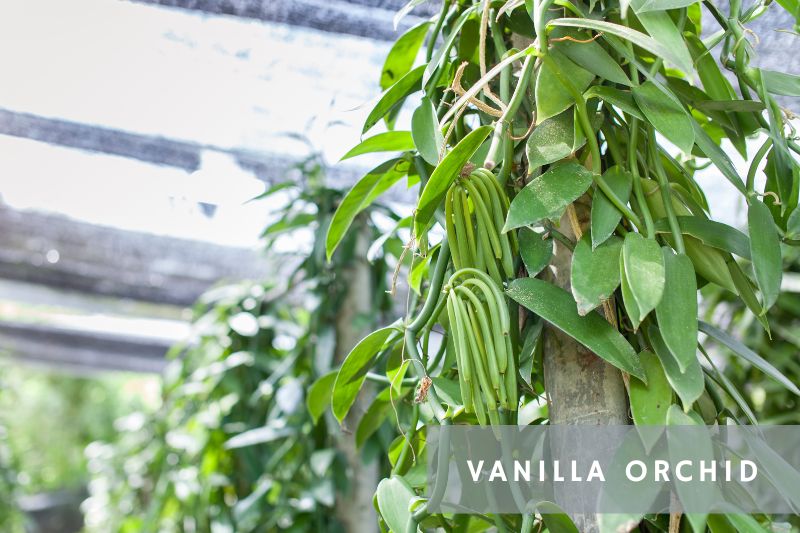
Vanilla Orchid is the plant responsible for natural vanilla flavor. It is a climbing orchid that requires support and a lot of care, making it a choice for the more devoted plant lover.
- Ease of Care: High; requires specific light and humidity conditions
- Best For: Experienced gardeners and those interested in producing vanilla
- Fun Fact: It’s one of the few orchids that produce an edible fruit.
21. Pink Jasmine (Jasminum polyanthum)
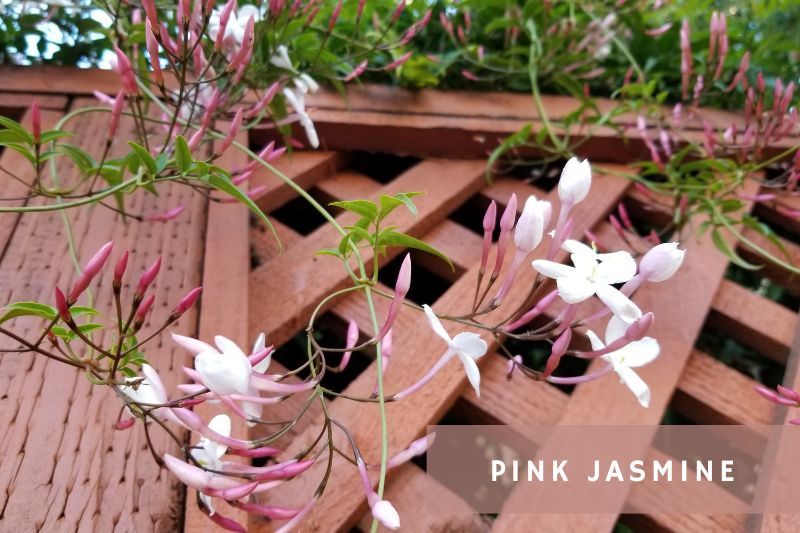
Pink Jasmine is known for its strong fragrance and beautiful pink and white flowers. This climber loves a sunny spot and rewards good care with lots of blooms.
- Ease of Care: Moderate; needs plenty of light and regular watering
- Best For: Fragrance and flowering displays
- Fun Fact: The fragrance is most potent during the evening.
22. Wire Vine (Muehlenbeckia complexa)

Wire Vine is a resilient plant featuring wiry stems and small, round leaves. It can adapt to a range of conditions and can be trained to climb or allowed to trail.
- Ease of Care: Low; adaptable to various conditions
- Best For: Versatility in planting styles
- Fun Fact: It’s often used in bonsai for its intricate, wiry stems.
23. Million Hearts (Dischidia)

With its tiny, heart-shaped leaves, the Million Hearts plant prefers humid conditions and indirect light, making it perfect for terrariums or hanging baskets.
- Ease of Care: Moderate; requires high humidity and indirect light
- Best For: Terrariums and small hanging baskets
- Fun Fact: The plant’s leaves have adapted to hold water, serving as ant homes in the wild.
24. Baby’s Tears (Soleirolia soleirolii)
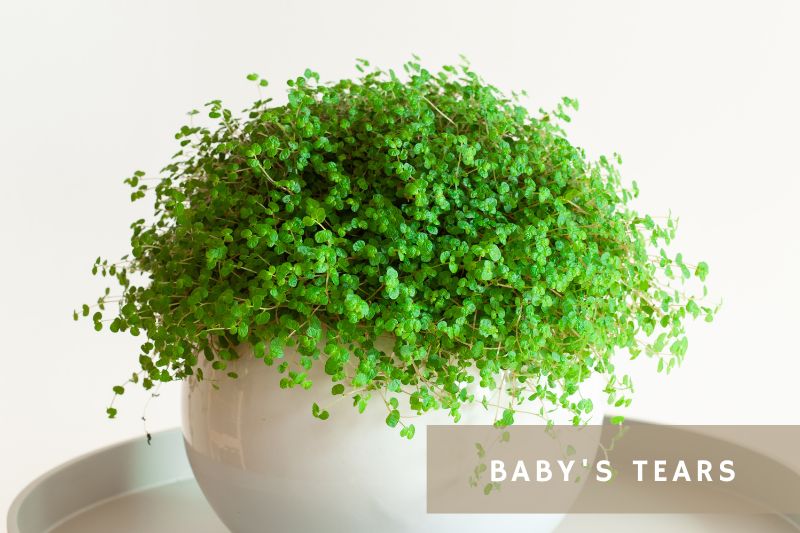
Baby’s Tears is a delicate-looking plant with tiny, round leaves. Its creeping growth habit makes it an excellent choice for ground cover in terrariums or as a filler in mixed planters.
- Ease of Care: Moderate; prefers high humidity and indirect light
- Best For: Terrariums and mixed planters
- Fun Fact: Despite its fragile appearance, it’s a fairly resilient plant.
25. Black-Eyed Susan Vine (Thunbergia)
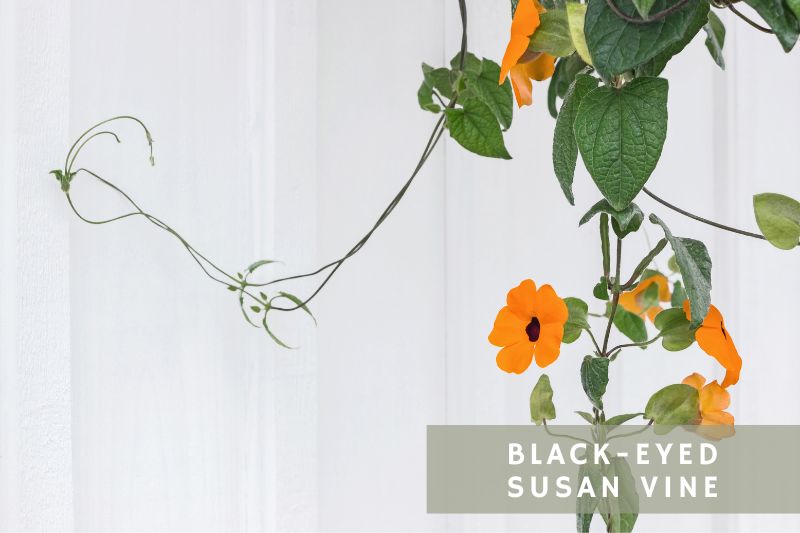
Black-Eyed Susan Vine is known for its bright orange flowers with dark centers. This fast-growing climber prefers a sunny location and can brighten up any indoor space.
- Ease of Care: Moderate; needs plenty of light
- Best For: Sunny spots and floral displays
- Fun Fact: The plant is native to Eastern Africa but has become popular worldwide.
26. Brazilian Jasmine (Codonanthe)
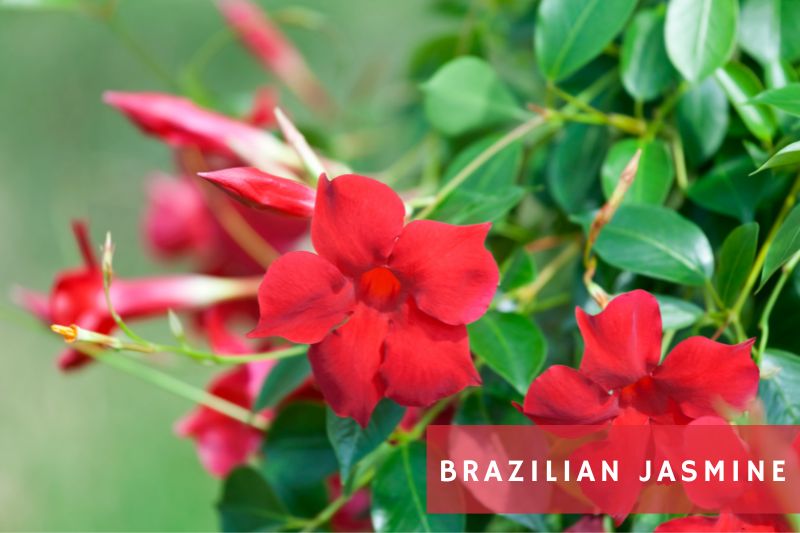
Brazilian Jasmine comes with glossy leaves and delicate flowers. It prefers moderate to bright light and rewards care care with frequent blooms.
- Ease of Care: Moderate; requires bright, indirect light
- Best For: Experienced gardeners and those who enjoy flowering plants
- Fun Fact: It’s not a true jasmine but belongs to the same family as African violets.
27. Goldfish Plant (Columnea)

The Goldfish Plant earns its name from its goldfish-shaped flowers. This quirky plant prefers high humidity and bright, indirect light to bloom successfully.
- Ease of Care: Moderate; requires high humidity and bright light
- Best For: Hanging baskets and quirky garden themes
- Fun Fact: The plant’s native habitat is the rainforests of Central and South America.
28. Prayer Plant (Maranta leuconeura)
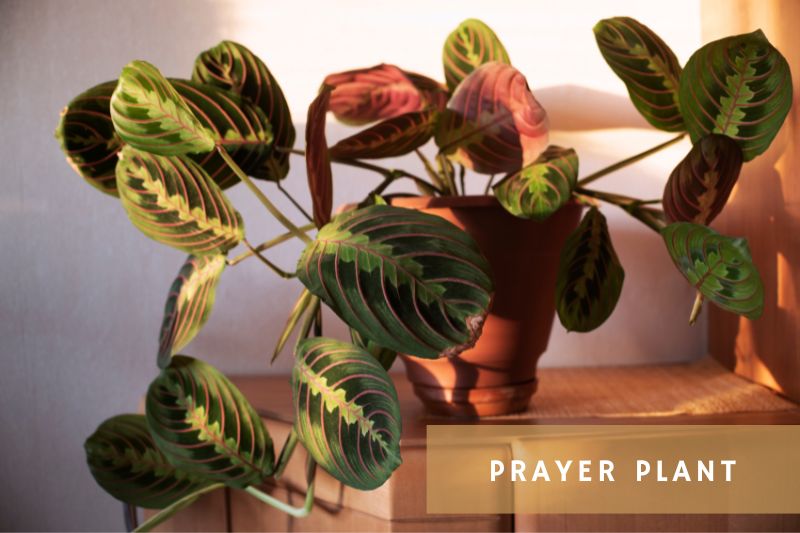
Prayer Plant features striking, patterned leaves that fold up, as if in prayer, during the evening. It prefers high humidity and indirect light, making it a great choice for well-lit bathrooms or kitchens.
- Ease of Care: Moderate; requires high humidity and indirect light
- Best For: Dynamic displays and well-lit bathrooms
- Fun Fact: The plant gets its name from the way its leaves fold up at night, resembling hands in prayer.
Conclusion
So there you have it—a list of some of the most fascinating indoor vining and climbing plants out there. Whether you’re just starting your indoor garden or looking to add a new member to your plant family, there’s something here for everyone. From the ever-popular Pothos to the finicky Vanilla Orchid, these plants come in a variety of shapes and colors.
Interested in sprucing up your bathroom with some greenery too? Don’t forget to read our guide on the best plants for bathrooms. You’ll find that some of these climbers and trailers absolutely love the humidity a bathroom offers.
Choosing the right plant ultimately depends on your care capacity and the vibe you’re going for, but rest assured, any of these options will bring life and beauty into your home.



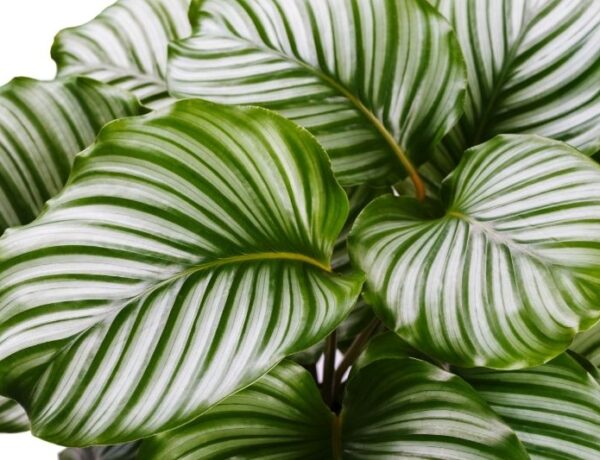


No Comments